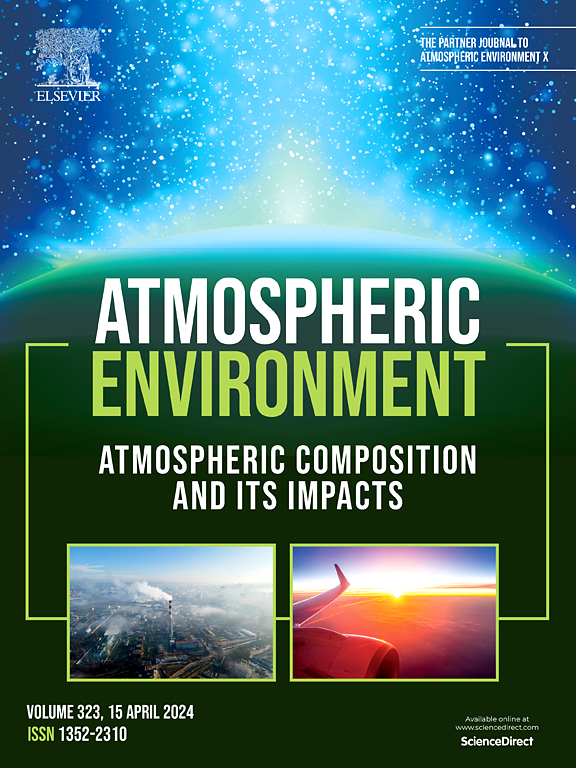Trends of PM1 aerosol chemical composition, carbonaceous aerosol, and source over the last 10 years at Melpitz (Germany)
IF 4.2
2区 环境科学与生态学
Q2 ENVIRONMENTAL SCIENCES
引用次数: 0
Abstract
Submicron particles (PM1) play a critical role in air quality, climate, and human health. Long-term monitoring is essential to identify changes in atmospheric composition driven by natural or anthropogenic emissions and processes. This study presents ten years of continuous measurements (Sept. 2012–Aug. 2022) at the TROPOS Melpitz research station in Germany, a Central European rural background site influenced by its location between Eastern and Western Europe. Using an aerosol chemical speciation monitor (ACSM) and a multi-angle absorption photometer (MAAP), alongside a rolling positive matrix factorization (PMF) model for organic aerosol (OA) source apportionment, we analyzed PM1 trends, chemical composition, and source contributions over a decade. The results reveal a significant negative PM1 trend of −4.59% y−1, with pronounced decreases occurring in fall and winter. Eastern air masses showed marked improvements (−28% y−1), likely reflecting regional mitigation policies. OA, contributing 44% of total PM1, showed a negative trend of −2.05% y−1 and comprised three primary OA (POA) sources—hydrocarbon-like OA (HOA), biomass burning OA (BBOA), and coal combustion OA (CCOA)—and two oxygenated OA (OOA) factors (less-oxidized and more-oxidized OA, LO-OOA and MO-OOA). HOA (7% of total OA) remained relatively stable, with a minor decline (−0.25% y−1) under Eastern air masses. In contrast, BBOA (10% of OA) and CCOA (12% of OA) displayed strong seasonality, driven by residential heating and energy production. Notably, BBOA increased by +0.48 % y−1 during summer, likely due to the rise in wood pellet heating, recreative, and/or wildfires, while CCOA showed a modest increase (+0.27% y−1) in Western air masses. The OOA factors, LO-OOA and MO-OOA (31% and 40% of OA, respectively), reflected distinct seasonal patterns tied to atmospheric formation pathways. Both showed declining trends in Eastern air masses (−1.52% y−1 and −1.09% y−1), indicating changes in biogenic emissions and/or anthropogenic precursors. Finally, eBC(PM1) decreased by −1.3 % y−1 with strong source dependency. Compared to urban areas, the overall decrease of PM mass concentration and anthropogenic OA looks limited, emphasizing a potentially lower effect of political mitigation outside cities. Overall, the findings underscore the importance of monitoring long-term changes in PM1 composition and sources, which are crucial for understanding aerosol physical properties, refining climate models and public health, and evaluating the impacts of mitigation efforts on air quality and climate in different environments. Further studies on a similar approach are strongly needed to better understand the geographical variation of the aerosol chemical composition and evaluate their potential effect.
求助全文
约1分钟内获得全文
求助全文
来源期刊

Atmospheric Environment
环境科学-环境科学
CiteScore
9.40
自引率
8.00%
发文量
458
审稿时长
53 days
期刊介绍:
Atmospheric Environment has an open access mirror journal Atmospheric Environment: X, sharing the same aims and scope, editorial team, submission system and rigorous peer review.
Atmospheric Environment is the international journal for scientists in different disciplines related to atmospheric composition and its impacts. The journal publishes scientific articles with atmospheric relevance of emissions and depositions of gaseous and particulate compounds, chemical processes and physical effects in the atmosphere, as well as impacts of the changing atmospheric composition on human health, air quality, climate change, and ecosystems.
 求助内容:
求助内容: 应助结果提醒方式:
应助结果提醒方式:


